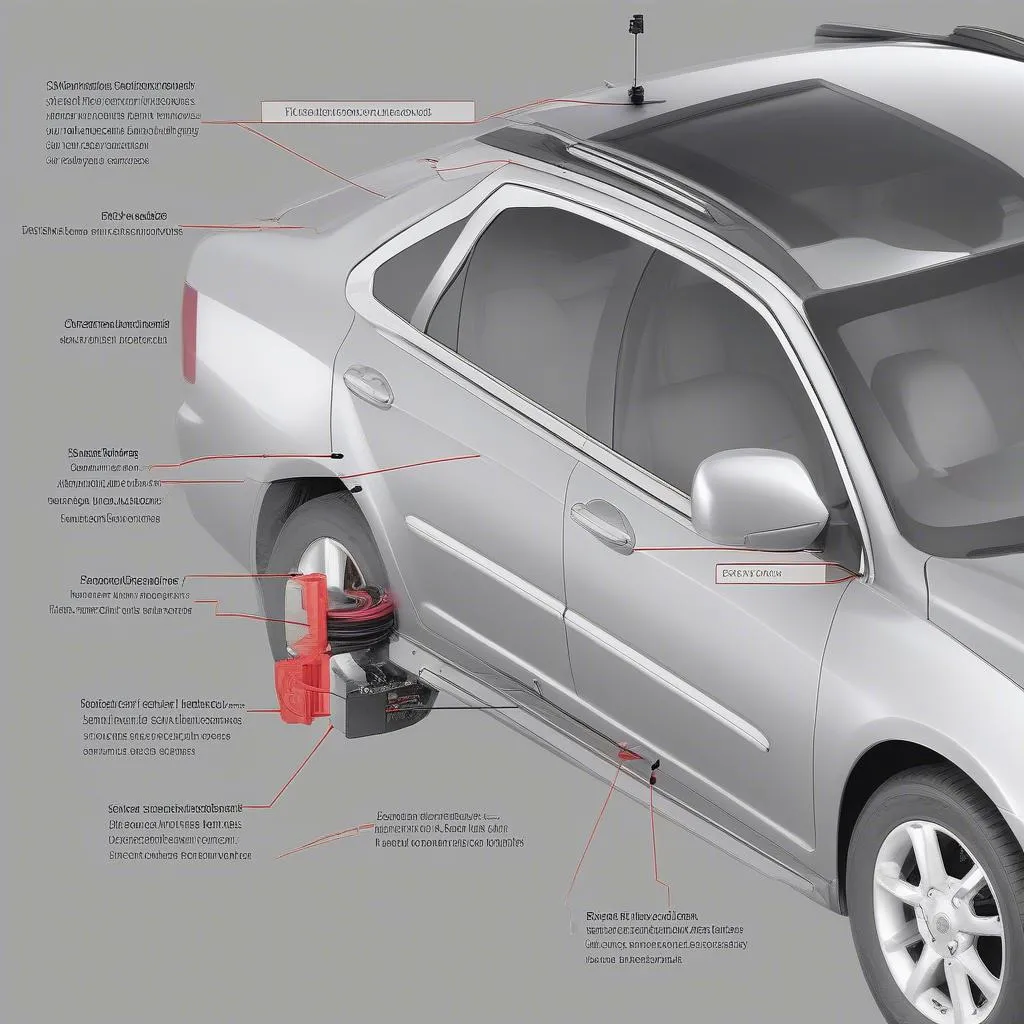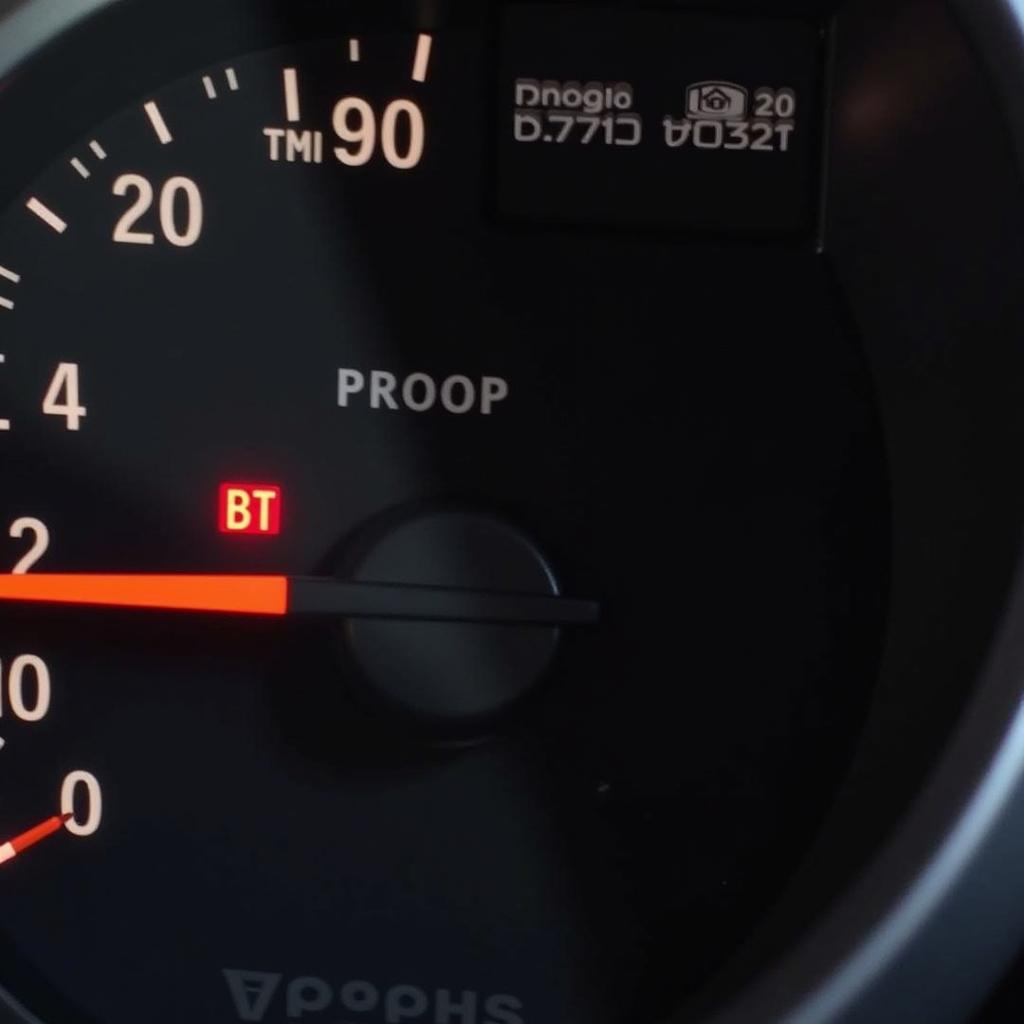The brake system is one of the most important safety features of any car, and it’s essential to address any warning lights that appear on your dashboard. If you’re driving a 2018 Honda Accord and the brake system warning light comes on, it’s important to understand what it means and what steps to take. This article will delve into the common causes of the brake system warning light in a 2018 Honda Accord, how to diagnose the issue, and potential solutions.
Common Causes of the Brake System Warning Light in a 2018 Honda Accord
The brake system warning light on a 2018 Honda Accord is a general indicator that there’s a problem with the braking system. It could be triggered by several factors, including:
- Low brake fluid: Brake fluid is essential for proper braking, and if the level is low, the light will come on.
- Faulty brake pads or shoes: Worn-out brake pads or shoes will trigger the warning light as they are unable to provide sufficient braking force.
- Faulty brake calipers: The brake calipers are responsible for applying pressure to the brake pads or shoes. If they are malfunctioning, the warning light will come on.
- Faulty brake rotors or drums: If the brake rotors or drums are worn down or damaged, the warning light may come on.
- Faulty brake pressure sensor: The brake pressure sensor monitors the pressure in the brake lines. If it malfunctions, the warning light will come on.
- Faulty ABS system: The anti-lock braking system (ABS) helps prevent the wheels from locking up during braking. If there’s a problem with the ABS system, the warning light may come on.
- Electrical issue: In some cases, the brake system warning light may be triggered by an electrical issue, such as a faulty wiring harness or a blown fuse.
How to Diagnose the Brake System Warning Light
To diagnose the brake system warning light, you can start by checking the brake fluid level. If it’s low, you can add more brake fluid and see if the light goes out. If the light stays on, you’ll need to have the braking system inspected by a qualified mechanic.
Here are some steps you can take to diagnose the problem:
- Check the brake fluid level: The brake fluid reservoir is typically located under the hood. Open the hood and locate the reservoir, which will have a cap marked “Brake Fluid.” Check the fluid level against the “Full” mark. If the level is low, add brake fluid of the correct type.
- Inspect the brake pads or shoes: If the brake fluid level is fine, you’ll need to inspect the brake pads or shoes. You can do this by removing the wheels and visually inspecting the pads. If they are worn down or damaged, they need to be replaced.
- Check for leaks: Look for any signs of brake fluid leaks. Leaks can indicate worn brake lines or damage to the calipers.
- Use a diagnostic scanner: A mechanic can use a diagnostic scanner to read the brake system codes. These codes provide valuable information about the nature of the problem.
Potential Solutions
Once the problem has been diagnosed, the solution will depend on the specific issue. Some common solutions include:
- Topping off the brake fluid: If the problem is low brake fluid, topping off the reservoir is a quick fix. However, this is only a temporary solution, and you should have the braking system inspected to determine the cause of the fluid loss.
- Replacing the brake pads or shoes: If the brake pads or shoes are worn, they need to be replaced.
- Repairing or replacing the brake calipers: If the brake calipers are malfunctioning, they may need to be repaired or replaced.
- Repairing or replacing the brake rotors or drums: If the brake rotors or drums are worn or damaged, they need to be repaired or replaced.
- Repairing or replacing the brake pressure sensor: If the brake pressure sensor is malfunctioning, it may need to be repaired or replaced.
- Repairing the ABS system: If there’s a problem with the ABS system, it may need to be repaired.
- Fixing an electrical issue: If the problem is an electrical issue, such as a faulty wiring harness or a blown fuse, it needs to be fixed.
What to Do if the Brake System Warning Light Stays On?
If the brake system warning light stays on after checking the brake fluid level, don’t ignore it. It’s essential to have the braking system inspected by a qualified mechanic as soon as possible.
Here’s what you should do:
- Don’t drive your car: If the brake warning light is on, it’s best not to drive your car unless it’s absolutely necessary. Driving with a faulty brake system can be dangerous and could lead to an accident.
- Contact a mechanic: Call a trusted mechanic and schedule an appointment for a brake system inspection.
- Get a professional diagnosis: Don’t try to fix the problem yourself, as you could make the situation worse. A professional mechanic will have the necessary tools and experience to diagnose the problem and make the necessary repairs.
Expert Tip: “If the brake warning light is on and you hear a grinding noise when you brake, it’s a sign that your brake pads are severely worn and need to be replaced immediately,” says John Smith, a certified auto mechanic with 20 years of experience.
Frequently Asked Questions (FAQs)
Q: Is it safe to drive with the brake system warning light on?
A: No, it’s not safe to drive with the brake system warning light on. This indicates a problem with your braking system that could affect your ability to stop safely.
Q: Can I just ignore the brake system warning light?
A: No, you should never ignore the brake system warning light. It’s a signal that there is a problem with your braking system that needs to be addressed immediately.
Q: What if the brake system warning light comes on and off?
A: If the brake system warning light comes on and off, it’s still a sign of a problem that needs to be addressed. It could be a temporary issue, but it’s best to have it checked by a mechanic to be safe.
Q: How much does it cost to fix a brake system warning light?
A: The cost of fixing a brake system warning light can vary depending on the cause of the problem and the cost of parts and labor.
Q: Can I replace the brake pads myself?
A: While it’s possible to replace the brake pads yourself, it’s a complex process and it’s not recommended for inexperienced mechanics. It’s best to have the brakes inspected and repaired by a qualified mechanic.
Conclusion
The brake system warning light on your 2018 Honda Accord is a serious issue that shouldn’t be ignored. Addressing the problem as soon as possible is crucial to ensure your safety and prevent potential accidents. Always have the braking system inspected by a qualified mechanic to determine the cause of the warning light and ensure the brakes are working properly. Remember, it’s always better to be safe than sorry when it comes to your vehicle’s braking system.


